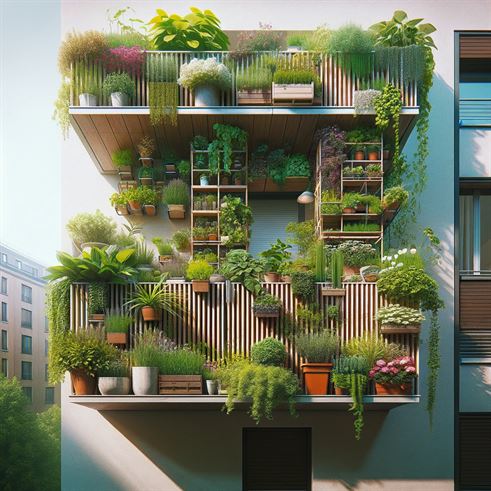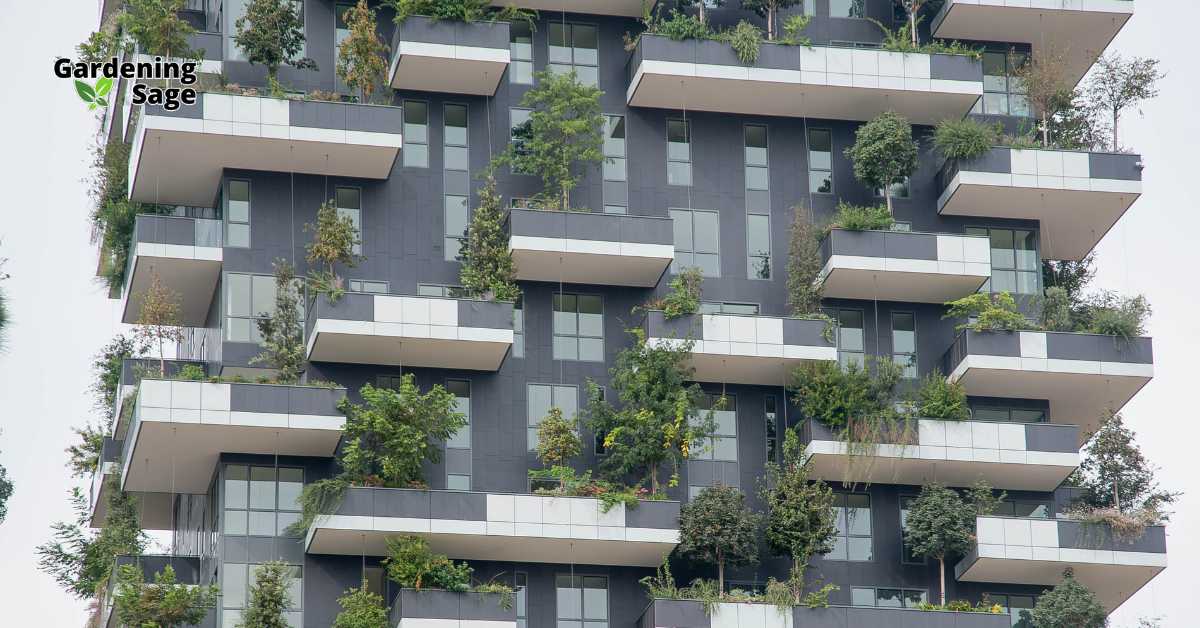In the heart of bustling cities, balconies often stand as the only connection to the natural world. Transforming these spaces into lush, thriving gardens can offer a respite from urban life and a chance to engage with nature.
This comprehensive guide is dedicated to helping you turn your balcony, regardless of its size, into a flourishing urban garden, full of life and beauty.

The Joy and Challenge of Balcony Gardening
Balcony gardening presents a unique opportunity to create a personal green space in urban settings. It’s about maximizing limited areas to grow plants, ranging from decorative flowers and foliage to edible herbs and vegetables. This type of gardening requires understanding specific challenges such as space limitations, varying light conditions, and the microclimate of your balcony.
Assessing Your Space: The First Step to Balcony Gardening
Before you begin, assess the size, strength, and exposure of your balcony. Consider the weight capacity to determine the scale of your garden and the types of containers you can use. Observe the amount of sunlight your balcony receives to choose suitable plants.
Choosing Containers: The Foundation of Balcony Gardening
Selecting the right containers is crucial. Options include traditional pots, hanging baskets, window boxes, and vertical planters.
Opt for lightweight materials and ensure all containers have adequate drainage to prevent waterlogging.
Picking the Right Plants for Your Balcony
The success of your balcony garden largely depends on plant selection. Consider the light, wind, and temperature conditions. For sunny balconies, choose sun-loving plants like geraniums, petunias, or tomatoes.
For shaded balconies, ferns, begonias, and hostas can be ideal.
Soil and Nutrition: Keys to Plant Health
Use high-quality potting soil specifically designed for container gardening. It’s formulated to provide the right balance of drainage and moisture retention.
Regularly fertilize your plants, as nutrients in containers can deplete quickly. Organic options like compost or fish emulsion are excellent choices.
Mastering the Art of Watering
Balcony plants may require more frequent watering than garden plants, especially during hot weather. However, over-watering can be just as harmful.
Invest in a watering can with a long spout for precision watering, and consider self-watering pots for convenience.
Vertical Gardening: A Solution for Small Spaces
Vertical gardening is a space-saving solution that can dramatically increase your growing area. Utilize wall-mounted planters, trellises, or hanging baskets to grow upwards.
This approach not only saves space but also adds visual interest to your balcony.
Balcony Herb Gardens: Fresh Flavors at Your Fingertips
Herbs are perfect for balcony gardens due to their compact size and usefulness. Grow a selection of your favorite culinary herbs like basil, cilantro, parsley, and mint.
Most herbs thrive in pots and require minimal care.
Growing Vegetables on Your Balcony
With the right conditions, you can grow a variety of vegetables on your balcony. Choose compact or dwarf varieties of plants like lettuce, peppers, radishes, and even small tomato varieties.
Utilize railing planters and vertical spaces to maximize your growing area.
Creating a Pollinator-Friendly Garden
Attract bees and butterflies to your balcony by planting pollinator-friendly flowers. Lavender, marigolds, and zinnias are great choices.
These not only help the environment but also ensure the pollination of your flowering plants and vegetables.
Balcony Garden Aesthetics: Blending Beauty and Functionality
Your balcony garden should be a place of beauty and relaxation. Arrange plants at varying heights to create depth.
Incorporate decorative elements like fairy lights, stylish planters, and comfortable seating to make your balcony an inviting space.
Dealing with Pests and Diseases
Keep an eye out for signs of pests and diseases. Practice organic pest control methods such as introducing beneficial insects, using neem oil, or making homemade insecticidal sprays.
Regularly inspect and clean your plants to keep them healthy.
Seasonal Care for Your Balcony Garden
Your balcony garden will change with the seasons. Prepare for winter by protecting sensitive plants, and refresh your garden in the spring with new plantings. Rotate plants occasionally to ensure they receive even sunlight.
The Rewards of Balcony Gardening
Balcony gardening can be incredibly rewarding. It provides an opportunity to grow your own food, connect with nature, and create a personal oasis in the city.
Enjoy the process of nurturing your plants and watching your balcony garden flourish.
A Lush Retreat in the Urban Sky
Creating a balcony garden is a journey of creativity and discovery. It allows city dwellers to engage in gardening, bringing a piece of nature into the urban landscape.
With careful planning, the right plants, and regular care, your balcony can transform into a lush, green retreat, offering a serene escape and a touch of beauty to your daily life.














